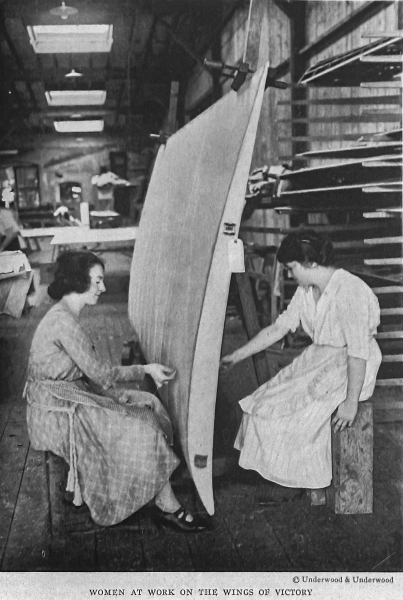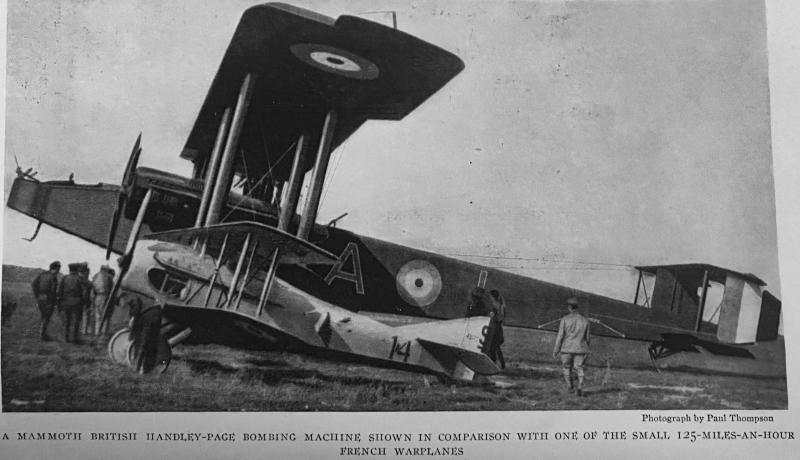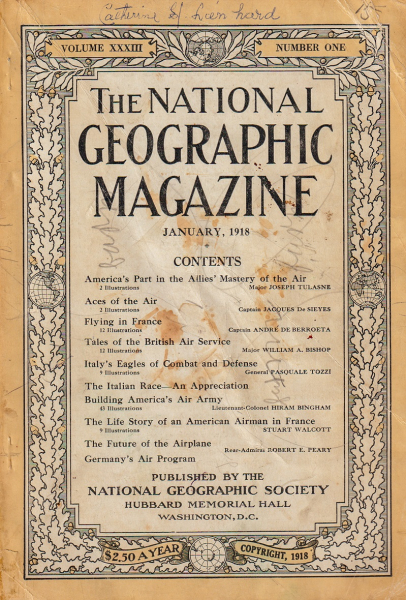Aerial Warfare in 1918
Today, Aerial warfare in another century. The University of Houston presents this series about the machines that make our civilization run, and the people whose ingenuity created them.
______________________
Look at this! I have a 1918 National Geographic Magazine. It’s all about aerial warfare in the late days of World War 1. Fascinating for what it does not say, more than for what it does say. As armies kept squeezing one more stitch of speed and firepower into their airplanes, the airplanes mutated. Like they were in some sped-up petri dish.
If that magazine appeared today, we’d expect photos of the latest airplanes. But primitive photos (like all information then) – were slow to reach us. The magazine’s writers are mostly stateside military brass, with no recent front-line experience.
So we turn pages and what do we find? Heroic stories by early aviators. And what airplanes do we see? Box-kite designs from the early days of combat. We read about balloons and dirigibles. (Tethered balloons rose as high as a mile, to spy on enemy trenches.) This magazine offers only vague ideas about enemy aircraft. The goal is to pump up civilian morale. And that means woefully under-estimating the enemy’s strength.

Still, this issue is valuable in other ways. It tells much about airplane building. How they molded wood and canvas to make sturdy fighting machines. We see women stitching canvas and covering wings with Irish linen.

But something more is afoot here: We see civilian thinking being molded. Sure, this is a free press. But it’s still propaganda. We were a nation at war abroad – war safely distant. No immediate threat here. Just look at the advertising! It makes it very clear how far away and safe we are. You can buy a Dodge Roadster for under nine hundred dollars. Ads for tires, oil, insurance. The ads ask us to invest in stocks and bonds. We are a prosperous nation – looking at that distant war.
Of course I’m prejudiced: My father was then flying those old airplanes in France. I want the magazine to identify the SPADs, Fokkers, Sopwith Camels. Don’t they understand that those old planes have identities? The Nieuports, the SE5s. Dozens of photos show us far-out-of-date airplanes. And I find only one of them identified! It’s an antediluvian Handley-Paige bomber.

How little we knew of the real war. It killed more than a hundred thousand Americans. Six hundred of them were pilots. But – fewer than half of those pilots died in combat. Flying was dangerous enough, even when you weren’t being shot at.
National Geographic was a wonderful magazine in its day. It carried us off on a magic carpet to other lands and other peoples. But here it reminds us: War does not just ravage life and land. Truth, as well, is always a casualty of war.
I’m John Lienhard, at the University of Houston, where we’re interested in the way inventive minds work.
(Theme Music) (3:23 minutes)
My source for this episode is The National Geographic Magazine, January, 1918.

For more on rates of improvement of military airplanes, see How Invention Begins, Chapter 8.
For more backstory on any of the airplanes I mention here, find episodes about them using the search button on the Engines site.
This Episode first aired on April 7, 2025.